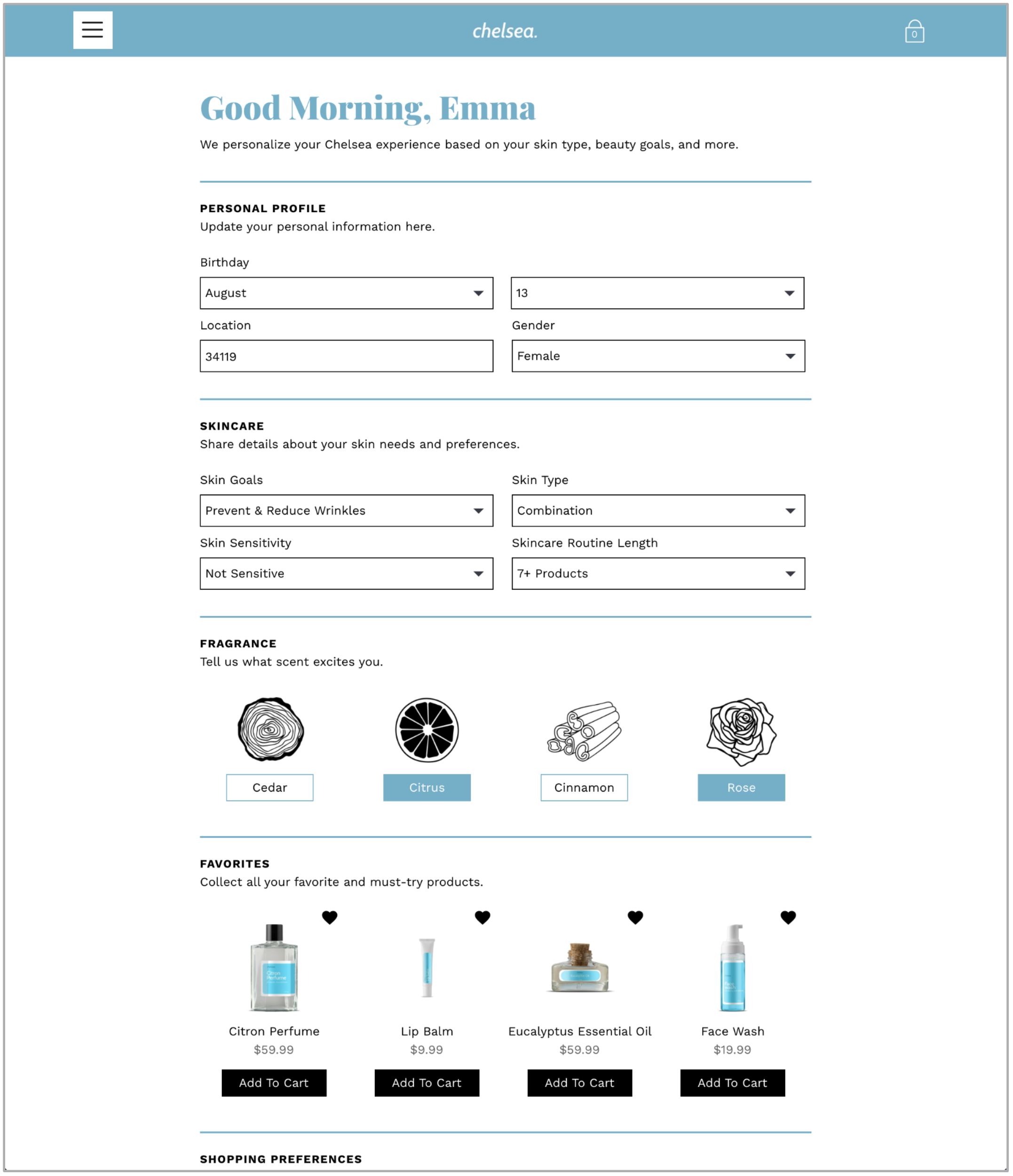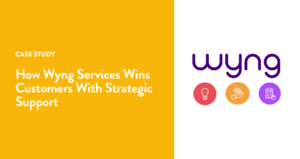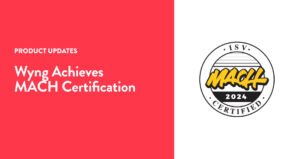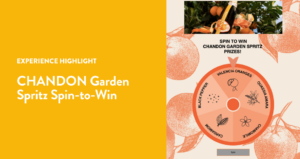Step-by-step guide, with examples
This is the second in a series of posts about zero-party data and Privacy-First Personalization. Read the first post here: The Future Of Personalization Is “Privacy-First”.
How is your brand responding to the changing attitudes, regulations, and technologies related to consumer data and privacy? According to Econsultancy, 49 percent of marketers say zero-party data collection (ZPD) is their most favored solution. ZPD is the consent-based, personal context data that customers intentionally and proactively share with a brand in order to improve their experience with the brand—personal needs, preferences, interests, favorites, motivations, intentions, etc.
Unlike first-party and third-party data, ZPD is uniquely valuable because it enables brands to deliver customer experiences that are at once welcome, relevant, and compliant—the three pillars of Privacy-First Personalization.
Brands collect ZPD by engaging with customers directly and asking them for it, along with permission to use it for specific purposes that benefit the customer. This brings data collection out of the fine print and into the light, upending the old ways of buying data (i.e., third-party) and quietly tracking customer activity (i.e., first-party) behind the scenes.
In this guide, we outline four steps to successfully source and maintain ZPD, and provide examples from brands in several industries:
- Step 1: Define your ZPD data model
- Step 2: Tap existing ZPD sources
- Step 3: Add new ZPD sources
- Step 4: Make ZPD management easy for customers
- Examples: Travel and hospitality, beauty, food and beverage, media, CPG
Step 1. Define Your ZPD Data Model
ZPD is brand-specific, so the first step is to identify the most important customer attributes for your business—not just email or mobile phone opt-ins, but attributes like goals, preferences, interests, wish lists, and intentions. Some attributes may be immutable or long-lived (e.g., a personal characteristic or a list of favorites), while others may be shorter-lived (e.g., plans to take a family vacation or renovate a kitchen).
Focus on customer attributes you can use to improve customer experience solutions by, say, personalizing the content, products, and offers you show each customer. Just one single data point can go a long way.
For example, when a user tells Yelp they’re a vegetarian, Yelp can provide them with vegetarian-friendly recommendations rather than steakhouses. Once you’ve defined your brand’s ZPD data model, it’s time to collect the data.
Step 2. Tap Existing ZPD Sources
Often without realizing it, brands have latent ZPD sources they can tap into—like customer surveys, chatbots, loyalty programs, or email preference centers.
By tapping into all your sources and unifying ZPD captured into centralized ZPD profiles, you can keep the collected information organized and up-to-date, make it accessible to your teams and tools, and use it to improve customer experience solutions.
Specialized ZPD infrastructure software, like Wyng ZPD API, makes the job easier by streamlining data processing and automating essential functions—like smart merging, cross-session unification, pseudonymization, and ZPD consent management and governance.
Step 3. Add New ZPD Sources
Whether you’re starting from scratch or filling gaps in existing ZPD profiles, the zero-party data formula offers a systematic approach to creating new ZPD sources. These are:
- Microexperiences: Create digital experiences that ask customers for one or more personal attributes, and permission to use the data for their benefit;
- Moments: Deliver the microexperiences to the right audiences, at the right moments of engagement on your website, app, or landing pages;
- Value exchange: Provide customers value in return for the data they share with you.
Forrester Research describes ZPD microexperiences as “short, simple interactions that ask a customer to volunteer three or four bits of information about themselves in context and in exchange for clear value.”
Depending on the target audience, microexperiences can be delivered as:
- Conversational experiences—like a “conversational opt-in” or “next best question” on a website, personalized to a specific segment of visitors (e.g., anonymous visitors, or known customers whose profiles are missing a certain ZPD attribute, or customers for whom it’s time to refresh an attribute);
- Always-on, evergreen experiences—like a product finder quiz on an ecommerce site, or an email opt-in form embedded in a website footer;
- Campaign landing pages—like a survey sent to an email list, or a sampling campaign directed to a Facebook audience.
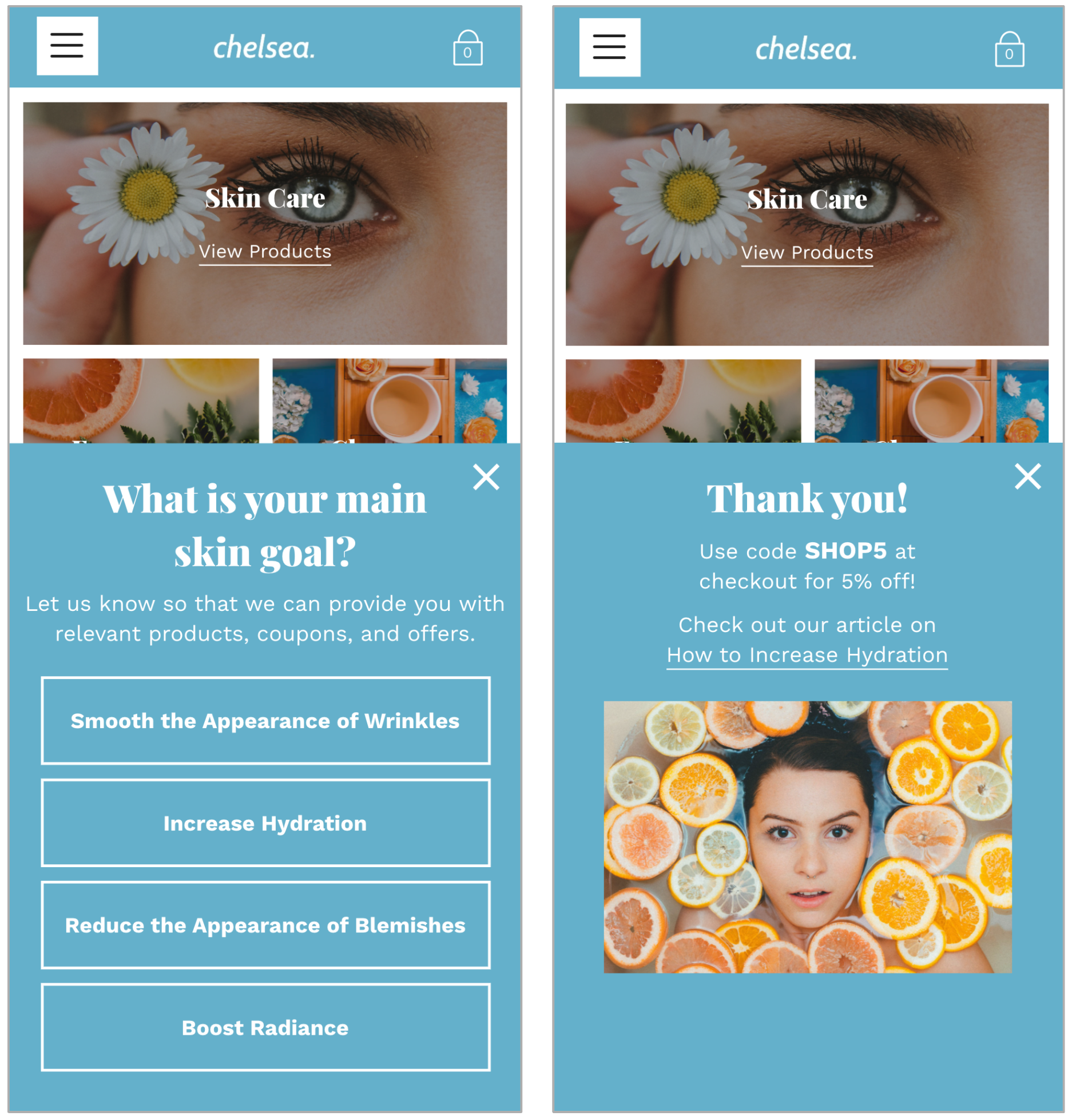 |
 |
| Example: Next Best Question | Example: Product Finder Quiz |
Why do customers share their personal data with a brand? According to Deloitte, 79% of consumers are willing to share data when they get value in return. And brands can deliver value in multiple ways — both “in the moment” as part of a microexperience, and “in the future” as part of ongoing interactions.
Value “in the moment” may include:
- Recommendations — product recommendations, guidance, or other advice, personalized using the ZPD shared as part of the microexperience;
- Offers — promo codes, coupons, free samples, loyalty points, instant wins, giveaways, or other benefits unlocked as part of the microexperience;
- Entertainment — entertaining, gamified, or fun experiences;
- Education — informative or instructional experiences;
- Assessment — experiences that test knowledge and score results;
- Exclusivity — gated content or exclusive access to an event.
Value “in the future” entails providing customers with more relevant or personalized communications, offers, and recommendations on an ongoing basis based on the ZPD they shared with you.
Your microexperiences should clearly explain what types of communications the customer is opting into, how their data will be used, and link to your privacy policy. This is a best practice that meets the criteria of freely given, specific, informed, and unambiguous consent—the highest bar for compliance worldwide, set by GDPR.
It’s easy to create ZPD microexperiences using technology purpose-built for the job, like Wyng Microexperiences. You can also improve your digital customer experience strategy by using other tools like a CMS, a survey builder, or a form builder. As always, make sure every source feeds your centralized ZPD profiles, so you can make the most of the data.
Step 4. Make ZPD management easy for customers
ZPD should be collected and used transparently. The best practice is for a brand to make the data accessible to each customer on an ongoing basis, via a secure customer portal on the brand’s website or mobile app. This portal is commonly referred to as a customer preference center.
A preference center makes it easy for customers to add, update, or revoke data whenever they want, and continually fine-tune their relationship with the brand giving them transparency, choice, and control, while also building trust.
Examples and Idea Starters
Vrbo, an Expedia Group company and the most popular vacation rental site in the United States, deployed the Vrbo Vacay Finder, a microexperience that serves up individualized vacation destination recommendations based on a traveler’s personal preferences.
Acne Free, a dermatology-inspired acne treatment, provides a diagnostic questionnaire to help customers find the right product for their condition. After participating, consumers get a personalized product recommendation along with a coupon offer.
Dermablend, a L’Oréal brand, offers a limited number of free product samples via campaign landing pages. Consumers receive samples in exchange for sharing their skin type, main skin concern, skin tone, name, email opt-in, date of birth, and address.
Bai Brands, a division of Keurig Dr. Pepper, created a “proof of purchase” microexperience to convert unknown customers to known contacts. After purchasing a bottle of Bai, customers enter their information (including email, ZIP code, phone number, and date of birth) and the on-pack UPC code to unlock a chance to win prizes.
TBS, a television network owned by WarnerMedia, embeds fun trivia quizzes about their shows on tbs.com. The quizzes collect data about each viewer’s knowledge of the show, along with their names and an email opt-in. The quizzes are also gamified, with countdown timers for each question, and each participant is rewarded with a sweepstakes entry.
Arm & Hammer, a Church & Dwight brand, engages visitors to armandhammer.com with a fun personality quiz. After completing a form and answering a series of interactive questions about cat ownership, participants are served a personalized product recommendation, a $2 coupon, and their “Purrsonality” type that they can share on social media. In the process, the brand collects contact information from each customer, as well as preference data related to their pet ownership.
The bottom line
To successfully collect ZPD, first define your brand’s ZPD data model and then start collecting the ZPD you need by tapping existing sources, adding new sources, and making it easy for customers to keep their ZPD up-to-date.
This is the second in a series of posts about zero-party data and Privacy-First Personalization. Read the first post here.
To learn about our API-powered platform for ZPD and Privacy-First Personalization, visit https://www.wyng.com/.



